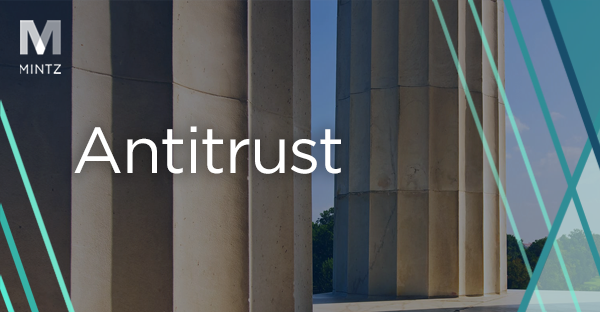USPTO Issues Guidance on AI Use to Patent Professionals — AI: The Washington Report
- On April 11, 2024, the United States Patent and Trademark Office (USPTO) released guidance on the use of AI tools by practitioners in connection with matters before the USPTO.
- In this guidance, the USPTO asserts that “existing rules protect the USPTO’s ecosystem against such potential perils.”
- The guidance covers six such rules, detailing how these rules relate to the use of AI. Patent professionals who deploy AI tools are encouraged to familiarize themselves with this document.
Pursuant to President Biden’s October 2023 executive order on AI, on April 11, 2024, the United States Patent and Trademark Office (USPTO or Office) published “Guidance on Use of Artificial Intelligence-Based Tools in Practice Before the United States Patent and Trademark Office” in the Federal Register. This notice provides insight into the USPTO’s current stance towards the use of AI services in connection with matters appearing before the Office.
The notice details existing USPTO policies that pertain to the use of AI tools and discusses the implications of these policies for practitioners appearing before the USPTO. Practitioners who are using or at some point may use AI tools in matters concerning the USPTO are encouraged to familiarize themselves with this notice.
The USPTO’s Application of Existing Rules to the Use of AI
As AI, and particularly generative AI technologies, evolve, professionals in a variety of domains are applying these technologies in novel use cases. Patent professionals are no exception to this trend. “With the advent of large language models and generative AI,” notes the USPTO, “legal professionals and others who practice before the Office are currently exposed to AI-based solutions that can create content, author legal research memos, perform due diligence analysis, extract legal principles contained in court opinions, and assist in deposition preparation.”
While these applications of AI can present myriad benefits, such as greater efficiency, the USPTO asserts that there are nevertheless “legal and ethical considerations that arise with the use of these technologies.” But despite the novelty of these considerations, the USPTO asserts that the advent of AI does not yet necessitate new rules. Through its various AI-related projects, engagements, and reviews, the USPTO has determined that “existing rules protect the USPTO’s ecosystem against such potential perils.”
In its notice, the USPTO identifies six existing rules that practitioners may violate by deploying AI tools in drafting patent correspondences.
Duty of Candor and Good Faith
Individuals with proceedings before the USPTO are subject to a duty of candor and good faith, “which includes a duty to disclose to the Office all information known to that individual to be material to patentability…” This duty extends beyond dealings with patent examiners and “covers other interactions associated with a proceeding at the USPTO” as well.
In its notice, the USPTO asserts that the duty to disclose all information material to patentability extends to “the use of AI tools by inventors, parties, and practitioners…that is material to patentability.” More specifically, the duty of candor and good faith covers not only the personal action of individuals with proceedings at the USPTO but also extends “to the actions these individuals take with any automated tools, including AI tools.”
Key Takeaway for Patent Professionals: Disclose the use of AI tools by all relevant parties if such use is material to patentability.
Signature Requirement and Corresponding Certifications
The USPTO’s signature requirement states that, in general, “all patent correspondence filed in the USPTO must bear a person’s signature.” This requirement does not permit another party to sign on behalf of a second person, even if directed by the second person to do so. The USPTO has put this requirement in place to have the party presenting the patent correspondence to certify that “[a]ll statements made therein of the party’s own knowledge are true…”
Because of this requirement, it “would not be acceptable for the correspondence [filed with the USPTO] to have the signature of an AI tool or other non-natural person.” In other words, “it is not compliant with the rules to have the AI tool apply the signature of a person without being personally entered by that person.”
Furthermore, “if an AI tool is used in drafting or editing a document, the party must still review its contents and ensure the paper is in accordance with the certifications being made. For example, given the potential for generative AI systems to omit, misstate, or even ‘hallucinate’ or ‘confabulate’ information, the party or parties presenting the paper must ensure that all statements in the paper are true to their own knowledge and made based on information that is believed to be true.”
The notice states that “any paper submitted to the USPTO must be reviewed by the party or parties presenting the paper. Those parties are responsible for the contents therein. Simply relying on the accuracy of an AI tool is not a reasonable inquiry. Therefore, if an AI tool is used in drafting or editing a document, the party must still review its contents and ensure the paper is in accordance with the certifications being made.”
Key Takeaway for Patent Professionals: When using AI tools to sign correspondences that are to be submitted to the USPTO, make sure that a person has reviewed the documents and the person believes everything in the document is true and not submitted for an improper purpose.
Confidentiality of Information
Under the USPTO’s confidentiality of information rules, a practitioner is required to “maintain the confidentiality of client information except in limited circumstances.” In its notice, the USPTO notes that the “use of AI in practice before the USPTO can result in the inadvertent disclosure of client-sensitive or confidential information, including highly-sensitive technical information, to third parties.”
This leakage of confidential information can happen, for instance, when “aspects of an invention are input into AI systems to perform prior art searches or generate drafts of specification, claims, or responses to Office actions.” As such, the USPTO warns that when “practitioners rely on the services of a third party to develop a proprietary AI tool, store client data on third-party storage, or purchase a commercially available AI tool, practitioners must be especially vigilant to ensure that confidentiality of client data is maintained.”
Key Takeaway for Patent Professionals: Proactively ensure that the use of AI tools does not violate the confidentiality of client information.
Foreign Filing License and Export Regulations
Patent practitioners seeking to file patents in foreign countries are subject to certain foreign filing license and export regulations. For instance, under certain circumstances, practitioners must secure a license from the Commissioner for Patents before filing any application for a patent in a foreign country if the invention was made in the United States; “[h]owever, [a] foreign filing license from the USPTO does not authorize the exporting of subject matter abroad for the preparation of patent applications to be filed in the United States. Rather, the export of subject matter abroad pursuant to a license from the USPTO, such as a foreign filing license, is limited to purposes related to the filing of foreign patent applications,” and [a]pplicants who are considering exporting subject matter abroad for the preparation of patent applications to be filed in the United States should contact the Bureau of Industry and Security (BIS) at the Department of Commerce for the appropriate clearances.”
With regard to AI, the USPTO asserts that “practitioners must be mindful of the possibility that AI tools may utilize servers located outside the United States, raising the likelihood that any data entered into such tools may be exported outside of the United States, potentially in violation of existing export administration and national security regulations or secrecy orders.”
As such, the USPTO recommends that before using AI tools, practitioners understand their “terms of use, privacy policies, and cybersecurity practices.”
Key Takeaway for Patent Professionals: Before using an AI tool, become familiar with its use, privacy, and cybersecurity policies to ensure compliance with foreign filing license and export regulations.
USPTO Electronic Systems Policies
As the technologies used to file patent applications have modernized, so have the USPTO’s own systems. In its notice, the USPTO states that access to these electronic systems “is subject to a number of terms and conditions. Exceeding authorized access or violating those terms and conditions in connection with accessing USPTO electronic systems may result in criminal or civil liability under federal law…and/or state law.”
Practitioners utilizing AI tools should be aware that under these terms and conditions, “AI systems may not obtain a USPTO.gov account. Further, practitioners may not sponsor AI tools as a support staff individual to obtain an account.” Additionally, a practitioner utilizing an AI system to submit documentation to the USPTO is responsible for “ensuring that computer tool does not exceed authorized access, including submitting or accessing papers in an application that the person does not have authorization to access.”
Key Takeaway for Patent Professionals: AI systems cannot be used to obtain a USPTO.gov account. Take care to ensure that AI tools used to submit documentation to USPTO do not exceed authorized access.
Duty Owed to Client
Under the USPTO Rules of Professional Conduct, a practitioner must “provide competent and diligent representation to a client.” Under 37 CFR 11.101, a practitioner must have “the legal, scientific, and technical knowledge, skill, thoroughness and preparation reasonably necessary for the representation.” The diligence requirement “states that the practitioner shall act with reasonable diligence in representing a client.”
Key Takeaway for Patent Professionals: Practitioners must have the requisite legal, scientific, and technical knowledge to reasonably represent their clients and not just rely on AI to satisfy this requirement.
Conclusion: Agencies Adjusting to the New Reality of AI
Often, discussions surrounding federal AI policy focus on Congress and the question of comprehensive AI regulation. While figures ranging from party leaders to agency heads have stressed the need for such regulation, it is nearly certain that such legislation will not be forthcoming in this Congress.
In the interim, the executive branch and associated federal agencies have stepped in. As we have covered in previous newsletters, agencies like the Federal Trade Commission and the Department of Justice have taken energetic action with regard to AI, filing complaints and initiating rules in order to establish themselves as premier AI regulators.
But alongside these actions, quieter but no less consequential action on AI is taking place across the federal bureaucracy. These actions, including the USPTO’s April 11, 2024, notice on the use of AI tools feature not the creation of new laws or rules but the application of existing standards to the novel conditions of the AI age.
As covered in previous actions, these applications of existing rules to AI are happening in domains as diverse as copyright, financial protection, and more. Professionals are encouraged to learn more about how regulators overseeing their industries are considering the application of existing regulations to the use of AI. Please feel free to reach out to us if you have any questions or would like guidance on how to best proceed.
Authors
Terri Shieh-Newton, PhD
Member
Bruce D. Sokler
Member / Co-chair, Antitrust Practice
Alexander Hecht
ML Strategies - Executive Vice President & Director of Operations
Christian Tamotsu Fjeld
Senior Vice President






